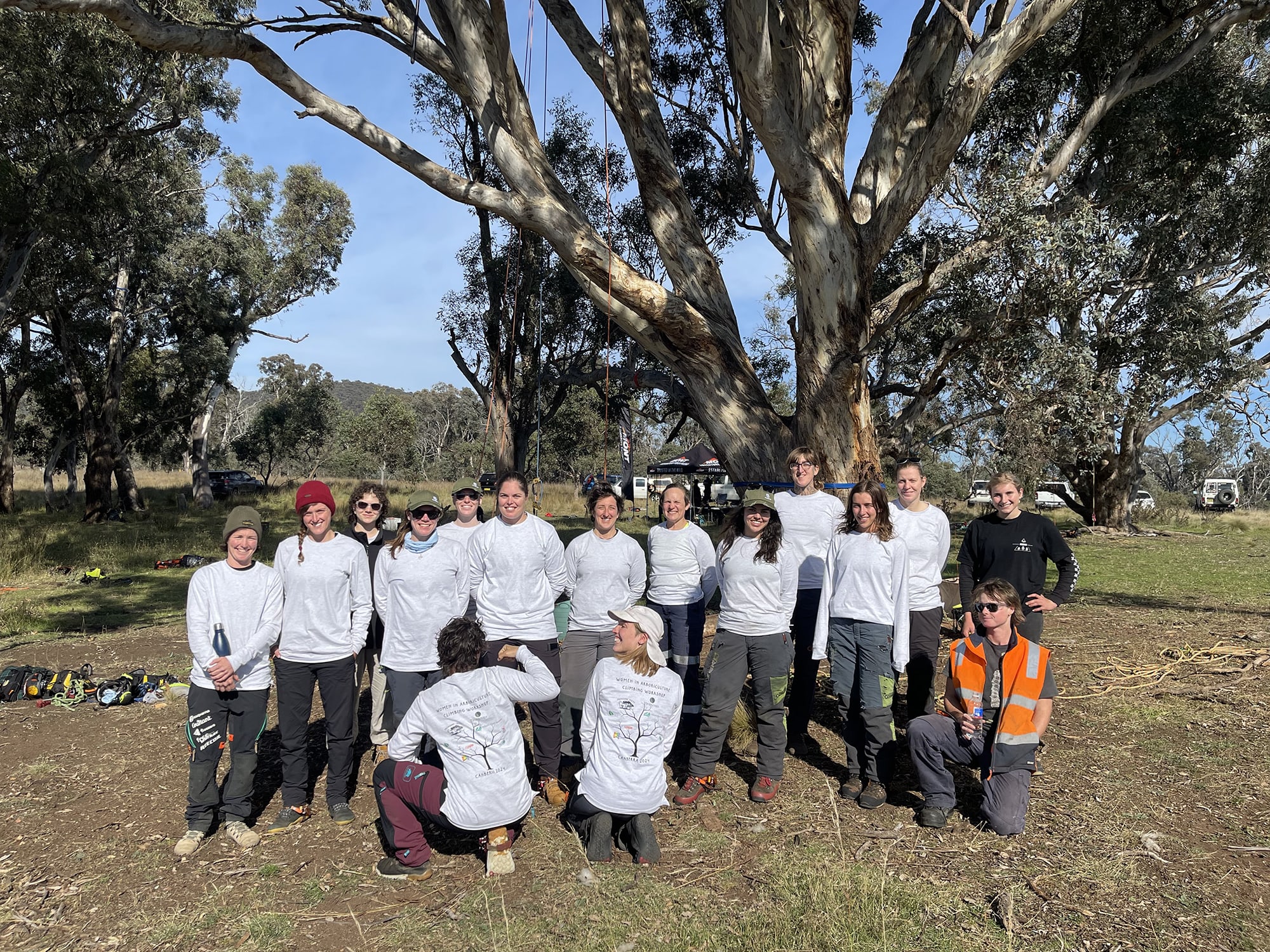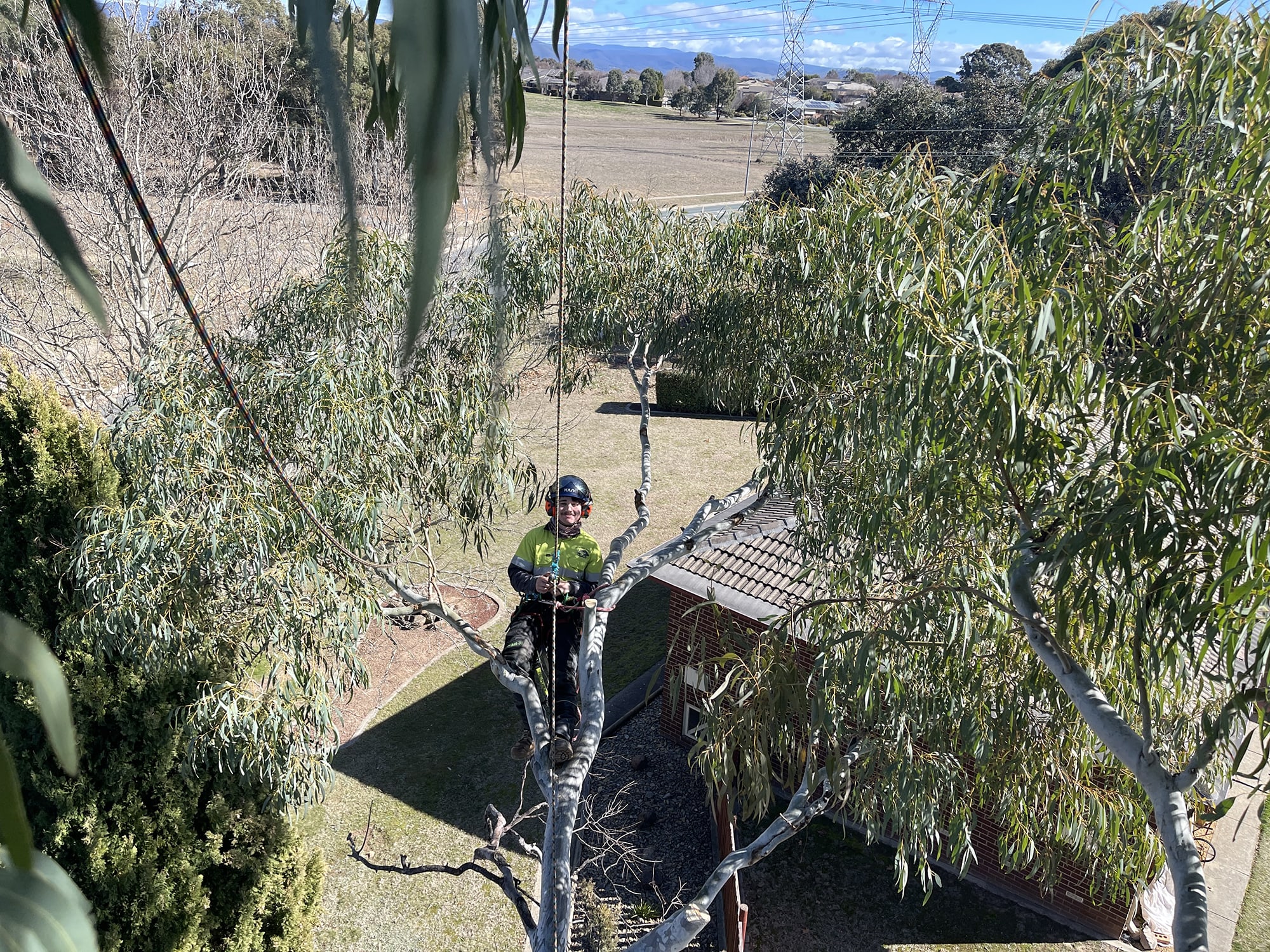Urban areas face a critical shortage of tree hollows, impacting the numerous birds and tree-dwelling species that rely on them. Hollows provide valuable roosting, shelter and breeding sites that are essential to many native birds, reptiles, amphibians and mammals. In south-east Australia, 17% of bird species, 42% of mammals and 28% of reptiles use hollows. The primary threats to the existence of urban hollows are:
- Tree pruning and removal due to society’s lack of understanding about tree assessment and tree risk; and
- The removal of trees to make way for urban sprawl and development.
Why is this a problem?
Many hollow-reliant urban species of animals proliferate in urban areas where there is an abundant food supply. With such a shortage of hollows in these densely inhabited areas, hollows close to suitable food sources become highly prized and hot property. Common hollow-reliant species readily observable in most south-east Australian towns include corellas, cockatoos, brushtail possums, ringtail possums, galahs, microbats, rosellas, kookaburras and gliders. Many other more discreet hollow-reliant species are also present in our built-up areas.
Native species frequently wind up living in amongst people through either being displaced by development or attracted into these urban areas due to our streetlights, mowed verges, sporting fields, diverse tree plantings and household food items all of which provide sources of food or foraging. There are, however, an insufficient number of suitable urban tree hollows to support their habitat and breeding requirements. Some introduced and feral species, such as Indian myna birds and feral bees also use hollows and outcompete our native species for the same sites. This further reduces the availability of suitable hollows.
What are the required features of a hollow?
Not all hollows are useful to all species. Factors such as whether the tree is dead or alive, the entrance size and shape, its depth and wall thickness, the height from the ground and the aspect will affect which species can use the hollow, how often and during what season. Different animal species have varying requirements, and these can differ even amongst closely related species.
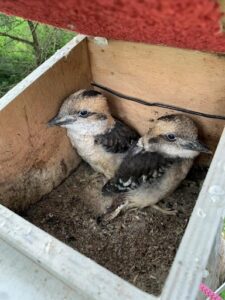 |
| A pair of baby kookaburras almost old enough to leave their nest box on the Queanbeyan Golf Course in NSW. Photo taken by arborist Christine Rampling with an iphone in November of 2022 during a climbing inspection. |
How long do natural hollows take to form?
Hollows take many decades to form. A small hollow with a narrow entrance suitable for smaller parrots and possum species will take about 100 years to form. Medium sized hollows suitable for larger parrots and larger possum species will take around 200 years to form. Larger and deeper hollows suitable for our largest parrot and owl species can take even longer than this to form.
Where are all the hollows?
Trees with hollows are disappearing from urban spaces. This is due to both tree removal for development and a low threshold of risk tolerance in humans. Our old and mature trees, including dead trees, capable of hollow formation are being removed by tree owners and managers due to perceived risk or to make way for built structures. Their replacements (if they are replaced at all) will not become hollow bearing for 100+ years.
Further, dead and living limbs containing hollows are also frequently pruned out, often unnecessarily, as a risk mitigation strategy to prevent limb failure. Fallen limbs and trees are frequently cleaned up despite providing excellent habitat for ground dwelling species.
Where are we going wrong?
Significant myth and misunderstanding surrounds tree risk assessment. People mistakenly believe that trees are mysterious and unpredictable structures. For this reason, it is often the case that perceived risk is incorrectly applied to decision-making about trees. This error in assessment results in management decisions being made with worst-case scenarios in mind. Trees are, however, statistically low risk structures and it takes little creativity to develop retention strategies that mitigate risk and preserve the benefits trees provide us. Similarly, for development, it again takes little creativity to design infrastructure that supports the retention of mature trees on the site.
It is important though, not to overlook the value of young and maturing trees as they will eventually become our old hollow bearing trees. Succession planting and a varied age class in our urban forests ensures a continued resource of maturing trees.
What else can we do to help with habitat?
Due to the extensive time it takes for a hollow to form, tree retention is by far the best way to address the hollow housing crisis. Wild animals in urban spaces frequently shelter or nest within built structures, whether it is a brushtail possum in a roof or a rosella in a downpipe. They can be quite resourceful in finding suitable habitat to meet their needs in the absence of natural hollows. Aside from retaining trees, animals in urban spaces can be supported via the installation of artificial hollows in existing trees or on the walls of buildings. But much like natural hollows, artificial boxes are not all created equal and can sometimes do more harm than good. Artificial boxes come in a range of materials, sizes, shapes and designs, and installation methods vary. How high the box is placed and the direction it faces will determine which species can use the box.
What do I need to think about before installing artificial habitat?
It is important to research and understand which species occur in your area when considering nest box installation. This knowledge will guide you in choosing a suitable design and installation location. The current minimum standard is a box in a sheltered position made from 15 mm exterior plywood. Ideally though, marine grade plywood upwards of 19mm thickness would be used as it provides better insulation from extreme temperatures. Pale coloured exterior grade paint should be used on the outside of the box to regulate temperature. The inside of the box should not be painted. Only hard-wearing brass, stainless steel or galvanised fittings should be used. Most species require an artificial box to be positioned on the south to south-east side for protection from direct sun and heat. For more detailed instructions and species specific box designs visit the invaluable ‘Nest Box Tales’ website by Alice McGlashan.
What or who else should I think about it?
Some thought should also go towards the types of competitors and predators likely to prey on occupants of the box. For example, an eastern rosella requires an entrance way of 65-70mm in diameter. This is sufficient to exclude cats, kookaburras and possums, but not gliders (who will predate on the young rosellas) or feral honeybees and myna birds who will compete for the box. In a residential urban setting, exclusion of possums and cats may be sufficient and monitoring for bee or myna bird invasion may be manageable. It is quite often an exercise of trial and error with ongoing monitoring and maintenance of the box being essential.
Why do I need to monitor the box?
Ongoing monitoring and maintenance of the box is a key part of artificial habitat installation. Monitoring can sometimes be done from the ground by the box owner by simply noting who is using the box and when. A lot can be ascertained from simply observing the comings and goings of animals inspecting or using the box. There are also pole mounted cameras that can be used to take a sneak peak inside the box to closely observe any occupants. Ladder access can also be used to take a closer look or to perform maintenance such as repositioning, replacement of weathered fittings, unblocking drainage holes, cleaning out built up material or removing the box for more serious repairs.
Why go to all this trouble?
Providing appropriate artificial habitat that leads to successful outcomes for urban natives is a rewarding experience. It is especially fulfilling to watch a family of crimson rosellas raise their young on the southern wall of your house or a brushtail possum curl up for a sleep in the nest box in your tree. Knowing that your considered thought and good intentions have provided a valuable resource to a wild animal feels good.
When it comes to managing urban trees, especially dead trees, aside from preservation of the broad benefits provided by our urban forests, specific consideration should be made to the habitat value of the tree. Tree removal should always be the last option. As Australian cities face the challenges of climate change, population growth and urban heating, it is crucial to plant and retain trees and to keep in mind the native species we share these spaces with and the impact our decisions have on them.
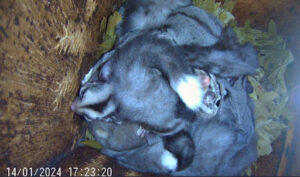 |
| A family of Krefft Gliders taken up residence in an artificial nest box designed for rosellas at Queanbeyan Golf Course in NSW. Photo taken by Christine Rampling using a pole mounted nest box inspection camera. |
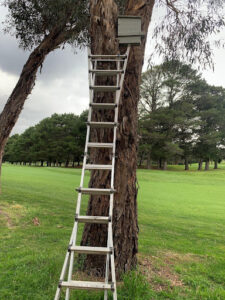 |
| A ladder set up for manual inspection and maintenance of a brushtail possum/wood duck design nest box on Queanbeyan Golf Course in NSW. Photo taken by Christine Rampling. |
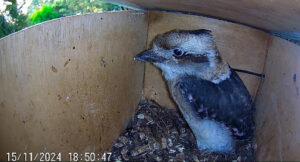 |
| Another kookaburra designed nest box being used in November of 2024 to successfully raise a juvenile kookaburra. Photo taken by Christine Rampling with a pole mounted nest box inspection camera at Queanbeyan Golf Course in NSW. |
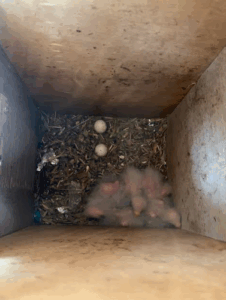 |
| Freshly hatched crimson rosella chicks in a rosella designed nest box tucked up under the southern eave of a house in Karabar NSW. Photo taken by Christine Rampling with an iphone during a ladder inspection. |
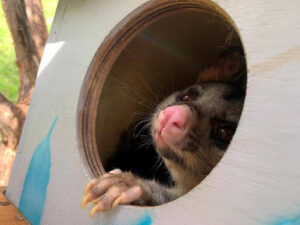 |
| A brushtail possum nervously peeking out of its box during an inspection of the Turallo Creek Nest Box Project at Bungendore NSW. Photo taken by Christine Rampling with an iphone during a ladder inspection. |
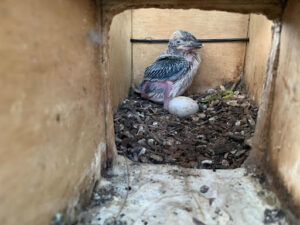 |
| A young kookaburra in late October of 2024 with its unhatched unviable sibling. Photo taken by Christine Rampling with an iphone during a climbing inspection. |
Christine Rampling is an AQF level 5 arborist with a keen interest in ecology.

